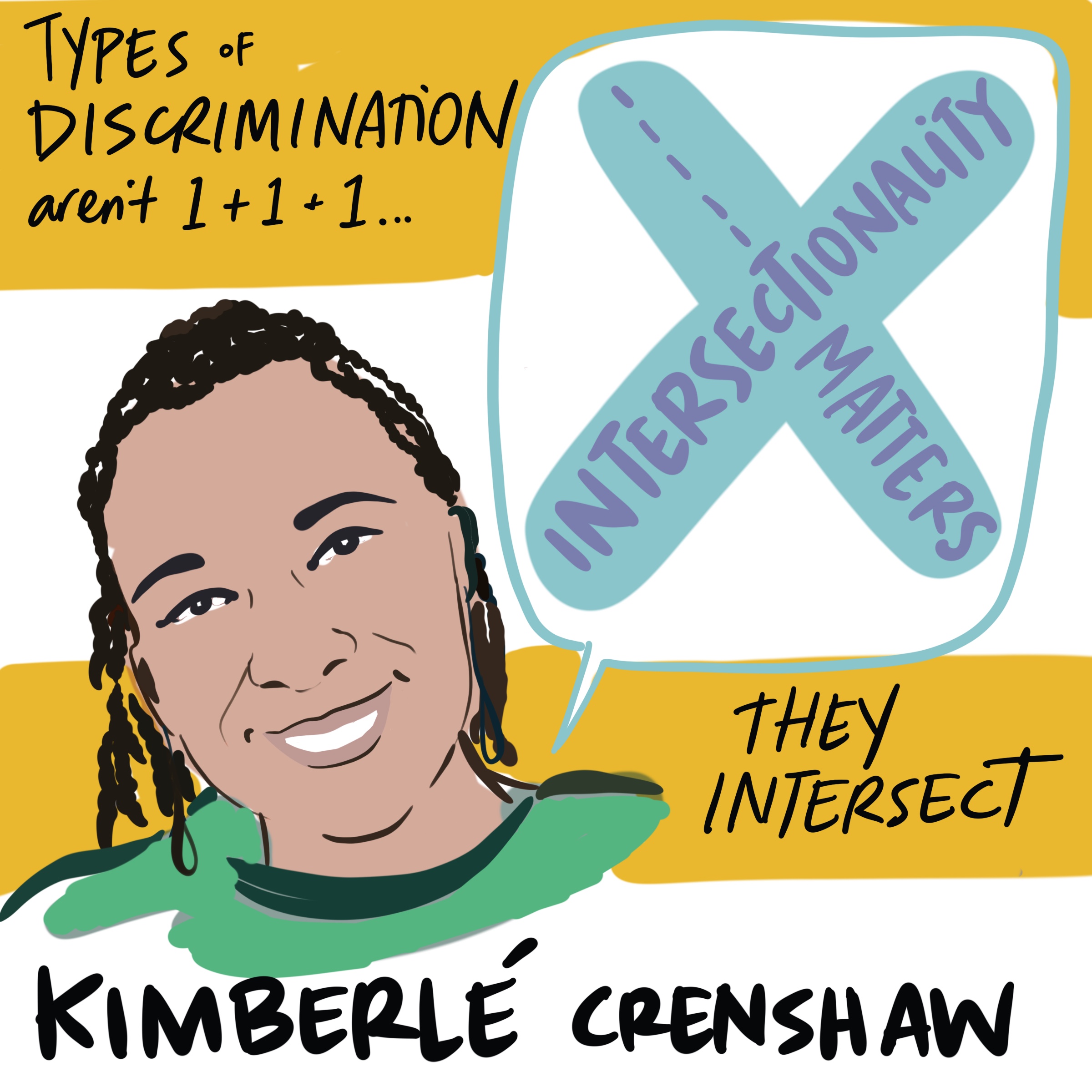Intersectionality

In 1989, lawyer and civil rights activist Kimberlé Crenshaw wrote a legal paper entitled, Demarginalizing the Intersection of Race and Sex: A Black Feminist Critique of Antidiscrimination Doctrine, Feminist Theory and Anti-Racist Politics.
The term intersectionality came from that paper; the word’s meaning can be difficult to define and has evolved over the years. Crenshaw wanted to explore how people’s social identities overlap; in 1989, she coined the term to describe when a black woman faced overlapping systems of oppression and discrimination – to describe the intersection of gender, race, and class.
Today the term is used to illustrate overlapping and interconneting types of oppression and discrimination such as gender, race, age, class, socioeconomic status, physical or mental ability, gender or sexual identity, religion and ethnicity.
“An African American man is going to experience the world differently than an African American woman… Somebody who is LGBT is going to experience the world differently than somebody who’s straight. Somebody who’s LGBT and African American is going to experience the world differently than somebody who’s LGBT and Latina. It’s sort of this commonsense notion that different categories of people have different kinds of experience.” ~David French
Media Attributions
- Intersectionality illustration by Drawing Change is licensed under a CC BY 4.0 licence.

